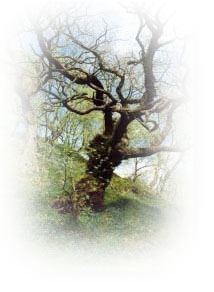
|
Wednesday 30th January 1918
|
|
The Waterford Peerage. Marquisate Claimed by a Gardener Beresford v. ATTORNEY-GENERAL and others.
Mr. Justice Coleridge began the hearing in the Probate Division today of a claim to the Waterford peerage. It took the form of a petition by 'George Beresford', sometimes know as George Tooth, of 8, Crescent-wood Road, Sydenham, in Surrey,' a gardener, for a declaration that he was the lawful son of John Henry De La Poer, fifth Marquess of Waterford. The respondent, the present holder of the title, an infant, by his mother as guardian ad litem, denied that the petitioner was the legitimate son of the fifth marquess and alleged, on the contrary, that he was the natural son of Georgina Tooth and that he was born at a workhouse in the Holborn Union. The petitioner alleged -
2) That after their marriage the said Marquess and Marchioness of Waterford lived together as man and wife at 7, Upper Brook Street and 27, Chesham Place, London.
(3) That there was issue born of the marriage - namely, the petitioner, George Beresford, on March 29 1873, at 27 Chesham Place.
(4) That the petitioner was the legitimate son of the said John Henry De la Poer Marquess of Waterford and natural born subject of the King.
(5) That the petitioner and the late marquess and marchioness were all domiciled in England.
(6) And that the petitioner was a gardener residing at Gardener's Cottage, 8 Crescent Wood Road, Sydenham.
(1) That the said John Henry De la Poer Marquess of Waterford and Florence Grosvenor his wife, were lawfully married.
(2) That the petitioner was their lawful son,
and
(3) That the petitioner was a natural born subject of the King.
The Attorney General by his answer-
(2) Did not admit that the petitioner was born on March 29, 1873, at 27 Chesham Place, or that he was the legitimate son of John Henry De la Poer Marquess of Waterford, or that he was a natural born subject of the King.
(3) Also he did not admit that the petitioner was legally domiciled in
England.
(2) That the petitioner was the issue of the marriage of John Henry De la Poer Marquess of Waterford. (4) In the alternative the respondent alleged that the petitioner, sometimes know as George Tooth, otherwise John Tooth, was the natural son of Georgina Tooth, and was born on January 25 1872 at the City Road Workhouse, Holborn Union, St Luke's district, and he asked the Court to dismiss the petition.
The respondent the Hon. Claude Anson, Lord Dounoughmore and Lord Decies, the trustees of the Waterford estates, in answer to the petition, filed similar pleas.
Williams K. C. and Mr. Bayford for the present Lord Waterford; and Mr. J. H. Pitcher for the Attorney-General.
The Petitioner's Case
The decree nisi was made absolute in 1870.Colonel Leslie, the uncle of Lord Waterford, had intervened unsuccessfully to set aside the decree on the ground of collusion on the part of Mrs. Vivian. Mrs. Vivian stayed at a Franciscan Convert, as she was going to join the Roman Catholic Church. That created hostility in the Beresford family. A child named Tooth, was brought in to the convent while she was there, Georgina Tooth, the mother died on February 3, a few days after the birth of the child on January 25 1872.The marchioness took such great interest in the petitioner that it was difficult to believe that the child could be merely the son of the sister of the cook at Mrs. Vivian.
An Effigy on a Tombstone
On April 4, 1873 Lady Waterford died at 27 Chesham Place after the birth of her child. A Mr. Pitney, an undertaker, would speak of burying a child at Curraghmore with Lady Waterford. That child was alleged to have died some days before its mother, and to have been buried first at Brompton or Kensal Green, and then at Curraghmore. A Mr. William Bell worked at Curraghmore from 1869 to 1874. He knew the firth marquess and his brothers; and he used to box with Lord William Beresford. The marquess was at Curraghmore during the hunting season of 1872-3.
He saw the vault in readiness for the funeral of Lady Waterford and saw the new coffin in the vault; and there was no coffin of a child there. An order for exhumation would clear up this point for both sides. The child was put out to nurse. He was weakly and ailing - perhaps the family did not wish him to be brought up in the Roman Catholic faith. Lord Waterford was then a widower and free to marry a woman without reproach. Perhaps people who put family and birth before anything else might prefer an heir from another wife. At any rate Lord Waterford married, secondly on July 21 1874, Lady Blanche Somerset, daughter of the Duke of Beaufort, and in April 1875, a boy, Henry De la Poer was born.
The evidence of a Mrs. Crow had been taken on commission. She know Mrs. Duncan and Miss Duncan used to bring the petitioner to see her (Mrs. Crow's) mother. The petitioner could speak of the presents which he received from the marquess. When Mrs. Duncan died, her daughter afterwards Mrs. Godfrey, became the petitioner's foster - mother. She called him George Tooth Godfrey. In October 1873, there was a letter from Miss Kynaston, afterwards Mrs. White, sending money from Lord Waterford to Mrs. Duncan.
There was also a letter from Lord Charles Beresford to the petitioner advising him to write to his nephew, Lord Waterford, as the petitioner was a stranger to him. The petitioner wrote to Lord Waterford saying that he was the eldest son of the fifth Marquess, though perhaps he might have been born before marriage. He said that though he was not desirous of high estate he wanted a share of his rights. He added that a solicitor of Brighton had offered him money to leave the country. He ( the petitioner) inquired if Lord Waterford had authorised the solicitor to make that offer. Lord Waterford wrote that he had never heard of the petitioner and advised him not to spend much money in making a claim which could easily be disproved.
A Solicitors letter
In July, 1902 the petitioner wrote to the sixth Lord Waterford saying that he was the son of the late marquess and asking for the 'necessary capital to obtain a start in life.' The solicitors of the marquess replied that it was 'quite untrue that you are any relation, legitimate or illegitimate, of any member of the Waterford family. We have made inquiries as to your parentage and know exactly who you are. It is disgraceful that you should make acts of kindness which you received at the hands of the late Lord Waterford the ground of the claims you put forward. Correspondence passed between solicitors and, eventually, the advisers of Lord Waterford wrote: 'We are in a position to prove beyond doubt that this person (the petitioner) is the child of Georgina Tooth, who was a servant in the employment of the late Mrs. Vivian, who subsequently became Lady Waterford. On July 3, 1905 the petitioner wrote to Lord Waterford asking him to assist himself and his family to go to the Colonies. The letter continued: 'I am willing to sign any document not to trouble your lordship again or any member of the family.
Lord Waterford's solicitors replied that their client was unable to give the assistance requested. In November 1911, the petitioner wrote threatening to 'make his whole case public in a well known journal. In 1914 the petitioner was prosecuted at the Old Bailey for certain letters which he had written to Mrs. White, and in which he had called her a 'murderess'. He pleaded guilty and apologized, and he was bound over for 12 months. The effect of those letters on Mrs. White made it impossible for the petitioner to insist on her presence in the witness box. There had been references to the petitioners likeness to members of the Beresford family, but since the decision of the Hours of Lords in the Slingsby case that could not be allowed to have any weight.
The Evidence
It was known as George Tooth. She did not know how long the child remained at the Convent. She saw it only once when it was dressed for the christening. She remembered Mrs. Vivian being at the Covent on several occasions. She never saw the child with Mrs. Jones, who was a seamstress at the Convent.
Mr. Cairns - Who took it way?
A Little old lady took it away in a cab.
The witness added that the baby was known as George Tooth.
In cross-examination the witness said that she had seen Mrs. Torr on two or three occasions about a year ago. Mrs. Anna Harding, of Rose Cottage, Sedgehill, said that she was 59 years of age and was the eldest daughter of Samuel and Elizabeth Larkin, of Henry Place Chelsea. She was on of 13 children. Mrs. Duncan attended her mother when her sisters Mary and Sarah Esther were born. In 1873 her brother Henry was born. At the time Mrs. Duncan had a child in her house.
Mr. Cairns - Was there a child there before Henrys birth?
No. I should have seen one it is had been there, as Mrs. Duncan only had two rooms.
How old was the baby? -
It was in long clothes. The witness described the baby as 'delicate and small.' She knew the child until he was seven or eight years old. He was always known as George Tooth.
In cross-examination by Mr. Gill, the witness said that nobody seemed to know whom the little boy belonged to. Mrs. Maria Brownhill, examined by Mr. Cairns, said that she was the wife of a retired builder. She had lived in Chelsea. Mrs. Duncan was her nurse in one of her confinements on July 10 1872. She was then living in Seymour Place. She remembered seeing Mrs. Duncan with a child in her arms after July 1872. The child was three or four months old. Cross-examined by Mr. Gill - It was difficult to remember dates so long ago. She had met Mrs. Torr two years ago.
News of the World March 3rd 1915
Times Editorial February 2nd 1918
The Times Law Report February 26th 1919
The Times A Solicitors Bill February 27th
1919
|
Pamela Bishop ©2002 - 2006 All rights reserved
last updated 16/11/2010 17:49
